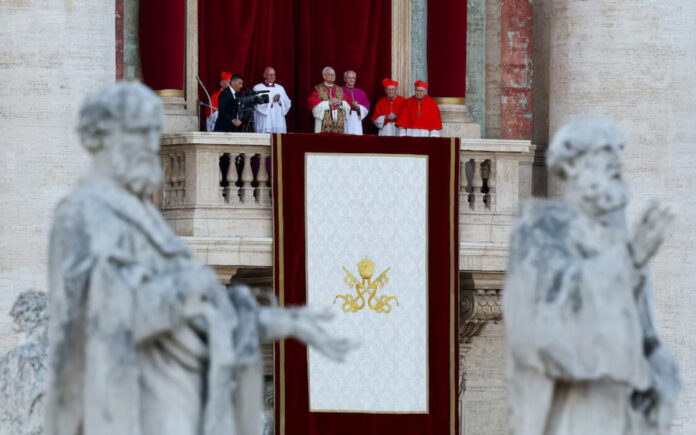Vatican City: In his debut appearance as head of the Roman Catholic Church, Pope Leo XIV offered three distinct signals about the direction of his papacy, providing early insight into how he may guide the global community of 1.4 billion Catholics.
The newly elected pope, formerly U.S. Cardinal Robert Prevost, emerged onto the balcony of St. Peter’s Basilica to address the world following his election by the College of Cardinals on the second day of the conclave. The conclave was convened to choose a successor to Pope Francis, who passed away last month.
Notably, Leo XIV is the first American-born pontiff, although he also holds Peruvian citizenship, a reflection of his extensive missionary work in the South American nation before rising through the ranks of the Catholic hierarchy.
A Name Rooted in Social Doctrine
The first indication of Pope Leo’s papal vision came with his choice of name. Historically, the name chosen by a pope serves as a theological and ideological compass for their tenure. Francis, for instance, adopted his name from St. Francis of Assisi, highlighting a papacy centered around humility and care for the marginalized.
By selecting the name Leo, the new pope evoked the memory of Pope Leo XIII, whose 19th-century papacy was deeply engaged with the rights of laborers, economic justice, and the dignity of workers.
“By picking the name Leo XIV, he shows he is committed to the social teaching of the church,” noted Rev. Thomas Reese, a Jesuit commentator renowned for his analysis of papal matters.
A Message of Peace, Delivered in the Church’s Tongues
The second key signal came through the language and tone of Pope Leo’s first public address. Emphasizing unity and global peace, Leo chose to speak not in English, but in Italian—traditionally the official language of papal communication—and briefly in Spanish, a nod to his missionary roots in Peru. Notably, he made no reference to the United States.
Opening with the phrase, “La pace sia con tutti voi!” (Peace be with you!), Leo sent a universal message, echoing the Church’s liturgical greetings while also underlining a core value of his spiritual leadership.
The call for peace comes at a time when conflict in regions such as Ukraine and the Middle East continues to dominate global concern. Ahead of the conclave, the College of Cardinals had expressed a “heartfelt appeal” for peace worldwide.
Also Read | IPL Match Moved from Dharamsala to Ahmedabad Amid Conflict, But Foreign Players Remain Committed: BCCI
Expanding on his message, the pope described the peace of God as “a disarmed peace and a disarming peace” that is “humble and persevering.” He also paid tribute to Pope Francis, recalling his final Easter blessing and acknowledging his enduring spiritual presence.
“We still have in our ears that weak, but always courageous voice of Pope Francis,” Leo said, before seeking the crowd’s permission to repeat his predecessor’s final blessing: “God loves us, God loves everyone, and evil will not prevail. We are in the hands of God.”
A Visual Return to Tradition
Pope Leo’s third major signal came not through words, but through appearance. While Pope Francis famously eschewed ornate garments when he first appeared in 2013, opting for simplicity over spectacle, Pope Leo wore a traditional red papal mozzetta over his white cassock.
This return to classic attire may reflect Leo’s intention to honor the institution’s traditions while still charting a new course for the Church. Though he follows in the footsteps of Francis, Pope Leo made it evident that he brings his own style and sensibility to the papal office.
Also Read | Erdogan Extends Condolences to Pakistan, Calls for De-escalation After India-Pakistan Missile Strikes
As the world observes the early days of Pope Leo XIV’s pontificate, these first choices—his name, his words, and his appearance—offer early markers of a papacy likely to blend continuity with a renewed emphasis on social justice and global peace.



